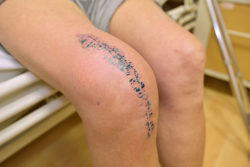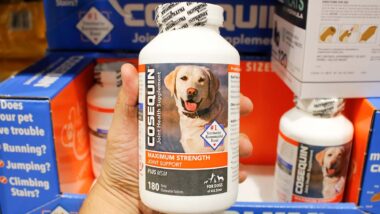Top Class Actions’s website and social media posts use affiliate links. If you make a purchase using such links, we may receive a commission, but it will not result in any additional charges to you. Please review our Affiliate Link Disclosure for more information.

A study published by the National Institutes of Health states that “aseptic loosening of the tibial component following total knee replacement is the leading cause of revision.”
Revision refers to a subsequent surgery to replace a knee implant that is no longer functioning properly, according to verywellhealth.com. Because of things like scar tissue and bone loss, revision surgery can be more complicated than the original knee replacement.
Issues with bone cement have been the subject of lawsuits against manufacturers of such products.
What is Bone Cement?
Bone cement is used to anchor the components of a hip or knee replacement to the bone. The term “cement” is not entirely accurate, as the material is not used to join two surfaces together like glue. Rather, it is more like grout or mortar. Known scientifically as polymethyl methacrylate, bone cement acts as filler material that secures the implant components against irregular bone surfaces (imagine fixing a fence post in place).
There are other types of bone cement, such as calcium phosphate and isonomer, but these are not as strong and are used primarily in dental and facial reconstruction surgeries.
Why Does Bone Cement Fail to Hold its Bond?
Not all types of bone cement are subject to premature failure. For orthopedic applications, bone cement comes in three degrees of viscosity, or thickness: low, medium and high. Some surgeons prefer the latter, high-viscosity cement, because it can be mixed more quickly, is easier to work with and requires less setting time.
The problem with high-viscosity cement (HVC), according to some researchers, is that it’s less likely to effectively bond to bone surfaces. This results in what is known as aseptic loosening.
In November 2016, the Journal of Arthroplasty published a case study which looked at 13 cases of patients who suffered premature failure of prosthetic knees (within approximately 2 years). In every case, HVC from various manufacturers had been used.
What Does “Aseptic” Mean?
“Aseptic” means loosening of the prosthesis in the absence of a bacterial (“septic”) infection. In most cases, this happens with the part of the prosthesis that is attached to the tibia (shinbone), which bears most of the weight.
What is Bone Cement Syndrome?
Bone cement syndrome
is a potentially fatal type of toxicity that occurs following surgery. The chemicals in bone cement, when entering tissues or the blood stream, can lead to dangerously low blood pressure, oxygen starvation, irregular heartbeat, blood clots and heart attack as well as neurological problems.
What Types of Bone Cement Have Failed?
Four varieties of bone cement from three manufacturers have been identified in cases of aseptic loosening:
- Cobalt HV Bone Cement (Biomet, DJO Surgical)
- CMW 1 Bone Cement (DePuy)
- SmartSet HV Bone Cement (DePuy)
- Simplex HV Bone Cement (Stryker, Howmedica)
If you’ve had revision surgery as the result of aseptic loosening, it’s possible that one of these products was used. A product liability lawyer with experience in medical devices can discuss possible legal options against the manufacturer and others.
If you or a loved one underwent revision knee replacement surgery or your doctor is recommending revision surgery three years or less after the initial implant and a bone cement was used, you may qualify to file a knee replacement revision surgery lawsuit. See if you qualify by filling out the free form on this page.
ATTORNEY ADVERTISING
Top Class Actions is a Proud Member of the American Bar Association
LEGAL INFORMATION IS NOT LEGAL ADVICE
Top Class Actions Legal Statement
©2008 – 2024 Top Class Actions® LLC
Various Trademarks held by their respective owners
This website is not intended for viewing or usage by European Union citizens.
Get Help – It’s Free
Join a Free Knee Replacement Cement Failure Lawsuit Investigation
If you qualify, an attorney will contact you to discuss the details of your potential case at no charge to you.
PLEASE NOTE: If you want to participate in this investigation, it is imperative that you reply to the law firm if they call or email you. Failing to do so may result in you not getting signed up as a client or getting you dropped as a client.
Oops! We could not locate your form.












